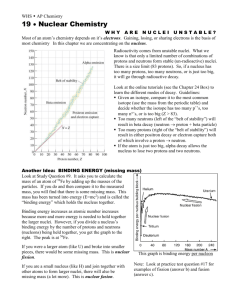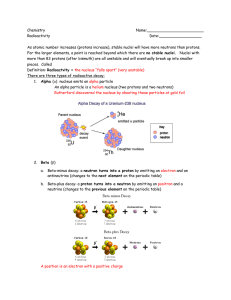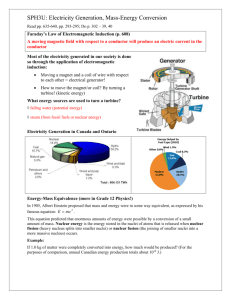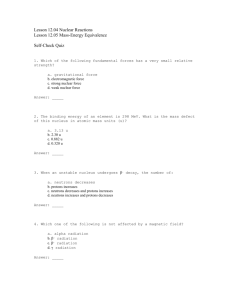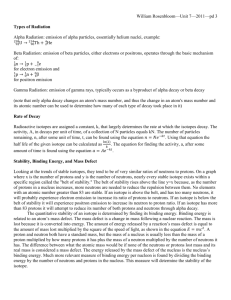Acrobat - Chemmybear.com
advertisement
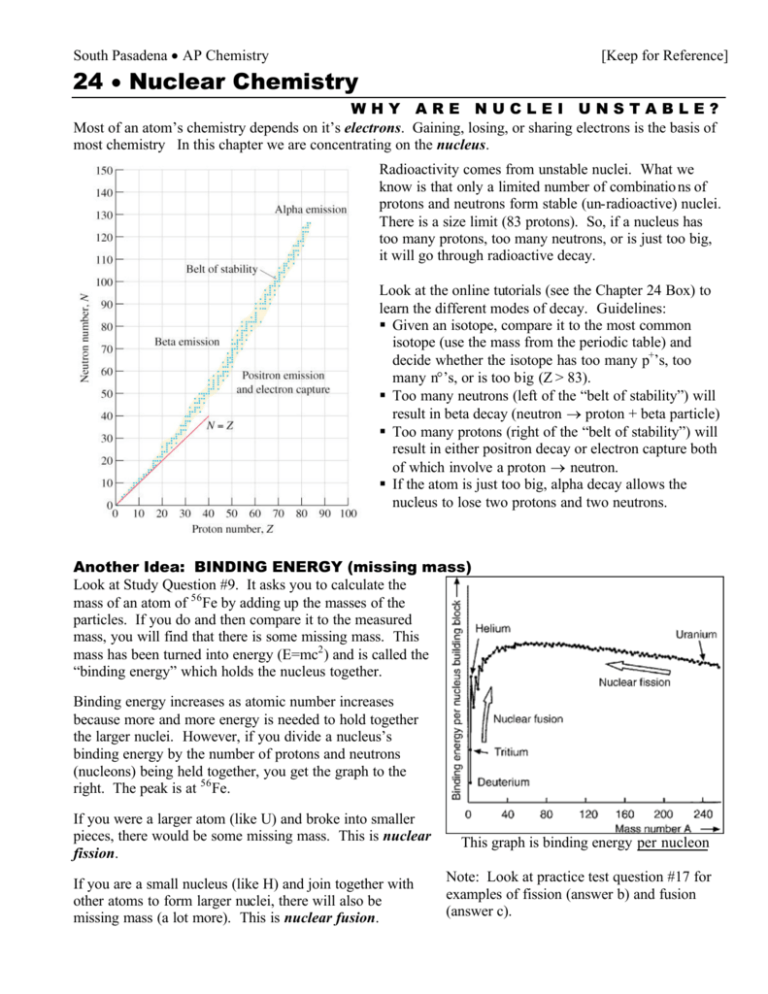
South Pasadena • AP Chemistry [Keep for Reference] 24 • Nuclear Chemistry WHY ARE NUCLEI UNSTABLE? Most of an atom’s chemistry depends on it’s electrons. Gaining, losing, or sharing electrons is the basis of most chemistry In this chapter we are concentrating on the nucleus. Radioactivity comes from unstable nuclei. What we know is that only a limited number of combinatio ns of protons and neutrons form stable (un-radioactive) nuclei. There is a size limit (83 protons). So, if a nucleus has too many protons, too many neutrons, or is just too big, it will go through radioactive decay. Look at the online tutorials (see the Chapter 24 Box) to learn the different modes of decay. Guidelines: § Given an isotope, compare it to the most common isotope (use the mass from the periodic table) and decide whether the isotope has too many p+’s, too many n°’s, or is too big (Z > 83). § Too many neutrons (left of the “belt of stability”) will result in beta decay (neutron → proton + beta particle) § Too many protons (right of the “belt of stability”) will result in either positron decay or electron capture both of which involve a proton → neutron. § If the atom is just too big, alpha decay allows the nucleus to lose two protons and two neutrons. Another Idea: BINDING ENERGY (missing mass) Look at Study Question #9. It asks you to calculate the mass of an atom of 56 Fe by adding up the masses of the particles. If you do and then compare it to the measured mass, you will find that there is some missing mass. This mass has been turned into energy (E=mc2 ) and is called the “binding energy” which holds the nucleus together. Binding energy increases as atomic number increases because more and more energy is needed to hold together the larger nuclei. However, if you divide a nucleus’s binding energy by the number of protons and neutrons (nucleons) being held together, you get the graph to the right. The peak is at 56 Fe. If you were a larger atom (like U) and broke into smaller pieces, there would be some missing mass. This is nuclear fission. If you are a small nucleus (like H) and join together with other atoms to form larger nuclei, there will also be missing mass (a lot more). This is nuclear fusion. This graph is binding energy per nucleon Note: Look at practice test question #17 for examples of fission (answer b) and fusion (answer c).
